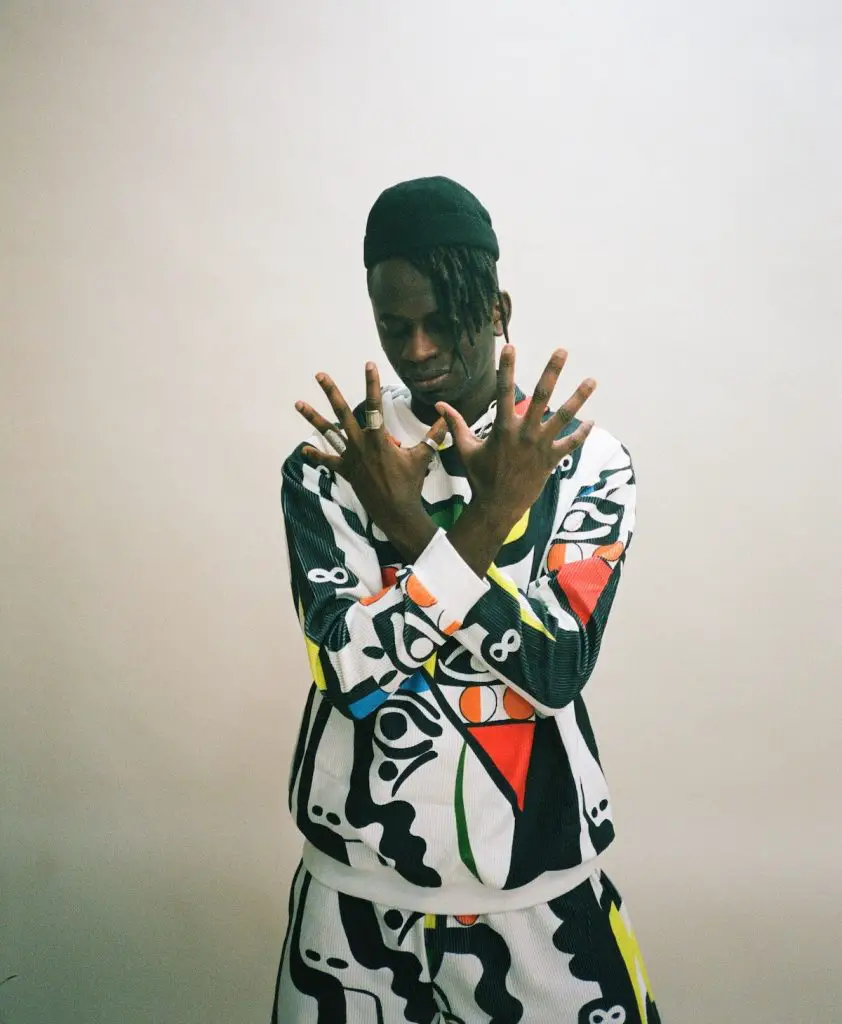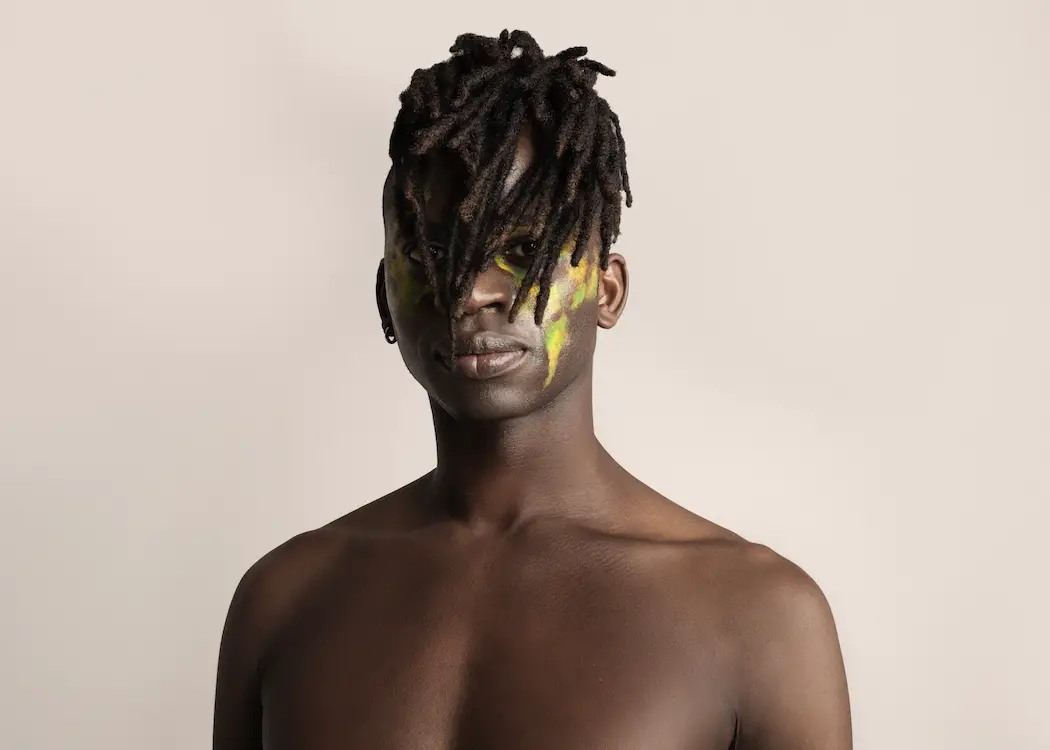WAYNE SNOW speaks to Atwood Magazine about his sophomore album ‘Figurine’, a smoldering and seductive exploration into the depths of identity that intoxicates the mind while feeding the soul.
for fans of serpentwithfeet, Jack Garratt, Moses Sumney
Stream: ‘Figurine’ – WAYNE SNOW
It comes from my fascination with the masks of happiness that we all wear, because we are afraid to show our true selves. A figurine to me is a kind of static puppet onto which artificial emotions can be projected. These are still powerful, but they do not come from within.
Identity is abstract and ever-changing, yet there is nevertheless something beautiful in our pursuit of understanding ourselves; of digging deep into questions of purpose and being in that lifelong quest to know who we are, what we are, and why we are. Such is the magic of WAYNE SNOW’s sophomore album, a moving musical journey that, despite leaving us with more questions than it does answers, nevertheless opens doors to a deeper kind of connection and understanding. A smoldering and seductive exploration into the depths of identity, Figurine intoxicates the mind while feeding the soul.

Change, yes, you’ve got tomorrow
Precious time where you can get your groove
All I want to say, yeah
Look in the mirror, oh baby
Look just how you move me
And I just want to say
We all want to get on it
That’s the thrill (Say I)
That’s the thrill (Mh)
Released September 24, 2021 via Roche Musique (FKJ, Darius, Kartell), Figurine is an intoxicating and wondrous experience. A Nigerian-born, Paris-raised, and now Berlin-based artist, WAYNE SNOW has made a name for himself in recent years with alluring, genre-blending left-of-center explosions of colorful sound. His music is a mesh of future jazz and neo-soul, filled with electronic flourishes and timeless R&B elements that make every WAYNE SNOW moment familiar, yet fresh at the same time.

While a majority of his earlier work – including 2014’s debut EP Red Runner – consisted of instrumental music or employed guest vocalists, Snow has found his voice on this latest material. His first two singles of the year, “Seventy” and “Nina,” came alive with glistening, golden vocals that soothed and soared alongside mesmerizing instrumental accompaniment. This holds true for the entirety of Figurine, which was produced together with Crayon, Nu Guinea, and Jan (Brandt Brauer Frick), and features acclaimed future-jazz artist Oscar Jerome. A diverse yet strikingly cohesive collection of cinematic, stirring songs, Figurine showcases Snow’s multi-dimensional artistry while highlighting his vocal, lyrical, and instrumental talents.
“The record introduces the interplay of sound and imagery that are my tools. I have always produced my work with both these elements in mind,” Snow tells Atwood Magazine. “With Figurine, I dove further into what my music looks like and what my visions sound like.”

For Snow, much of this album has to do with who we are and who we pretend to be; for the masks we wear and what lies underneath the facade. “A figurine to me is a kind of static puppet onto which artificial emotions can be projected,” he explains. “These are still powerful, but they do not come from within. Much like surface emotions that humans display in order to hide what we truly feel.”
Snow is careful to not say too much about his music, feeling passionately about letting listeners come to their own conclusions about each song. In truth, Figurine is an album that needs to be experienced in order to be understood: The full band’s creative instrumental work holds as much, if not more weight than the lyrics, and everything is bound together through Snow and his collaborators’ incredible performances.
“Rather than taking something away from Figurine, my hope is that listeners bring something to it,” Snow says. “Their interpretations, their emotions and ultimately the images it conjures for them.”
Whether you’re hypnotized into surrender by the stunning “Faceless,” or moved to dance by the entrancing “Nina,” Figurine has a way of pulling more out of us than we thought possible; of soaking us in a world of wonder, and leaving us better than we were before. To celebrate this record’s release, Atwood Magazine spoke with WAYNE SNOW about his artistic process.
Read our interview for an intimate conversation with Snow that, just like his multifaceted second album, leaves us with plenty of food for thought.
— —
:: stream/purchase Figurine here ::
A CONVERSATION WITH WAYNE SNOW

Atwood Magazine: Wayne, can you share a little about the story behind this record?
WAYNE SNOW: This record is a culmination of what I have learned up to this point. Both musically and for the collaborative process I was able to build on and put to use the tools and talents I have collected. And this resulted in a record that I made with performance in mind. Whereas [with] my first album I imagined a dance floor, this one I had made for my band, me and our live audience.
What was your vision going into this record? Did that change over the course of recording this?
WAYNE SNOW: Every album is the product of a process. And once one is done, you start anew. At the beginning of the Figurine process I had written a manifesto. It described a world ruled by sonic chaos produced by synthetic machines with a calm voice expressing emotions of a troubled mind that was guiding listeners, calling them to it. This was what I was working towards. The way there however was open. A bit like having planned a route using a map, but letting yourself be guided by the scenery once you are traveling the road for real. I started playing with vintage synthesizers to create the soundscape of my imagination and used my voice to act as the guide pulling you in and along the tracks.
Do you mind sharing a little more about this manifesto, and perhaps why you think you wrote it?
WAYNE SNOW: The manifesto is not something to be shared outright. Writing it marked the beginning of the creative process for the second album and allowed me to begin steering the creative flow towards the shape it ended up taking. During the production it morphed into the tracks, dissolved into rhythm and lyrics. It no longer exists, but has become what you can now listen to.
Do you feel that Figurine is an apt, or accurate manifestation of this manifesto in the musical realm?
WAYNE SNOW: Yes. There is no accuracy though. Whatever it would have ended up being, would in a sense have been right. As the manifesto simply marked the point in time where a creation began.

Much of your music seems to embrace space in sound – sounds are stretched, vocal are held and elongated, and silence is a welcome moment for reflection, pauses, and breath. Can you talk about how you approached sonic space on this record?
WAYNE SNOW: I’ve always turned to silence as a vessel of meaning. Pauses give both breathing space and allow for echo and resonance. Both my lyrics and music work best when they are given enough time to truly flourish and for the listener to really process them. Words carry meaning, one that is often abstract and so the listener needs a moment to respond emotionally. If given space I find body and mind can sit on a groove, can make a connection and transform what has come in through the music into a deeply personal reaction and comprehension. I learned this by listening to masters like Miles Davis who had an incredible sensibility to creating immense impact with few frills. It’s a mastery that relies on singular notes hit just right and played to timely perfection.
How do you feel Figurine introduces you and captures your artistry?
WAYNE SNOW: The record introduces the interplay of sound and imagery that are my tools. I have always produced my work with both these elements in mind. With Figurine, I dove further into what my music looks like and what my visions sound like.
Can you describe this record in three words?
WAYNE SNOW: Seventy, Nina, (the) thrill.
Those are the titles of the album’s first three singles. Can you explain why these embody the overall record for you?
WAYNE SNOW: They are the tracks that are accompanied by a video. A triptych of sound and visuals. Each for a different reason carries the album’s message. “Seventy” is sullen and melancholic, the accompanying visual a serene blue. With “Nina” yellow playfulness enters the picture, it’s uplifting and celebratory. And finally “The Thrill” is mysterious and enticing, the shading is darker and asking for exploration, it does not offer ease of meaning but needs guesswork and a willingness to enter the unknown. In their combination they speak to the complex emotional spectrum we are all capable of. Moving from one to the other, having them bleed into each other creates a sense of possibility and richness of experience that none of them could do on their own.
A different day
A different view
A different day
A day, a difficult…
I let myself believe
I’m your figurine
Could you carry me
Like a falling leaf?

Why the title “Figurine”?
WAYNE SNOW: It comes from my fascination with the masks of happiness that we all wear, because we are afraid to show our true selves. A figurine to me is a kind of static puppet onto which artificial emotions can be projected. These are still powerful, but they do not come from within. Much like surface emotions that humans display in order to hide what we truly feel. This is what the song “Figurine” is about and as that song was instrumental in forming all the others it is both the opening and title track.
Following the song “Figurine,” what inspired you to open with “Silly Games”? How do you feel this song helps set the tone?
WAYNE SNOW: “Silly Games” is the follow up chapter to Figurine both in content and rhythmically. Which is the combination that solidified the choice of it being the second track. Whereas Figurine muses on pretending to be something you are not and displaying emotions you are not genuinely feeling, Silly Games is a commentary on being fed up with such behavior. It speaks to the destructive power putting on masks can have. This point is being underlined by a drum track that carries the listener fully into the record. Sitting these two tracks side by side establishes the exploration of sound and words as one that takes turns and dives deep, establishing a theme and then mirroring it back to allow a multitude of perspectives.
How did the process of building up “Faceless” come about, and how did you go about capturing the depth of this song in harmony and vocal layering?
WAYNE SNOW: I started working on the track with Nelson of the East, a young Berlin-based producer and we fleshed out the body of the track as a whole. We added as many elements as we could think of. Working on it in the final stages with Crayon we did the process in reverse. We simplified and removed to arrive at the perfect balance for the song. It was an interplay of creating and editing. A process that begins with a free flow of ideas, trying everything that comes to mind without restriction and then gently stripping back. It’s similar to a sculptor who begins with a raw material that is not yet shaped, sitting with it and understanding the form hidden within. The difference is that as a musician I do not have a slab of stone to start from, I first have to build the raw material up, to then do the carving process.
As a lyrically forward artist, do you have any favorite lyrics in these songs?
WAYNE SNOW: Not really, and it is not up to me to choose. Once I have put the words out there I am more interested in what resonates with others. The ears of the listeners hear and interpret the lyrics in ways I cannot and do not want to control. To me it would be more interesting to reread or explore the words I penned and sang by what stands out to others. Lyrics have a life of their own. It’s what makes poetry ultimately interesting to me. The fact that you write it, send it into the world and may encounter it as something altogether different when you meet again.
Love and desperation
Filled my heart with illusion
Love and contemplation, yeah
Could it be a solution, yeah
But when I’m lookin’ over faces in the subway
Oh, you got me wishing, they can hear my heart break
Love is faceless
The same for everyone
But love delusion
It’s maybe what we want

Do you have any definitive favorites or personal highlights off this record?
WAYNE SNOW: The final stage of this album came to be as my surroundings moved into COVID-induced lock-down in March of 2020. During this stand-still I was trying to figure out how to step into conversation with what was going on around me only to realise that what I had created was already speaking to the moment. As people were faced with their own mortality en masse, masks started dropping. Having just created something that encapsulated my reaction to what was going on was quite an incredible alignment of completing a work of art just as its relevance became evident. This I could not have predicted, but is an example of the power of poetry and music, which live not in the time of its creation but both before and after it.
What do you hope listeners take away from Figurine?
WAYNE SNOW: Rather than taking something away from Figurine, my hope is that listeners bring something to it. Their interpretations, their emotions and ultimately the images it conjures for them.
Lastly, how do you feel coming out of the artistic process that created Figurine? What has this album given you?
WAYNE SNOW: It made me want to keep right going. The process never stops.
— —
:: stream/purchase Figurine here ::
— — — —

Connect to WAYNE SNOW on
Facebook, Twitter, Instagram, Website
Discover new music on Atwood Magazine
? © Kiroubel Beaujour
:: Stream WAYNE SNOW ::








